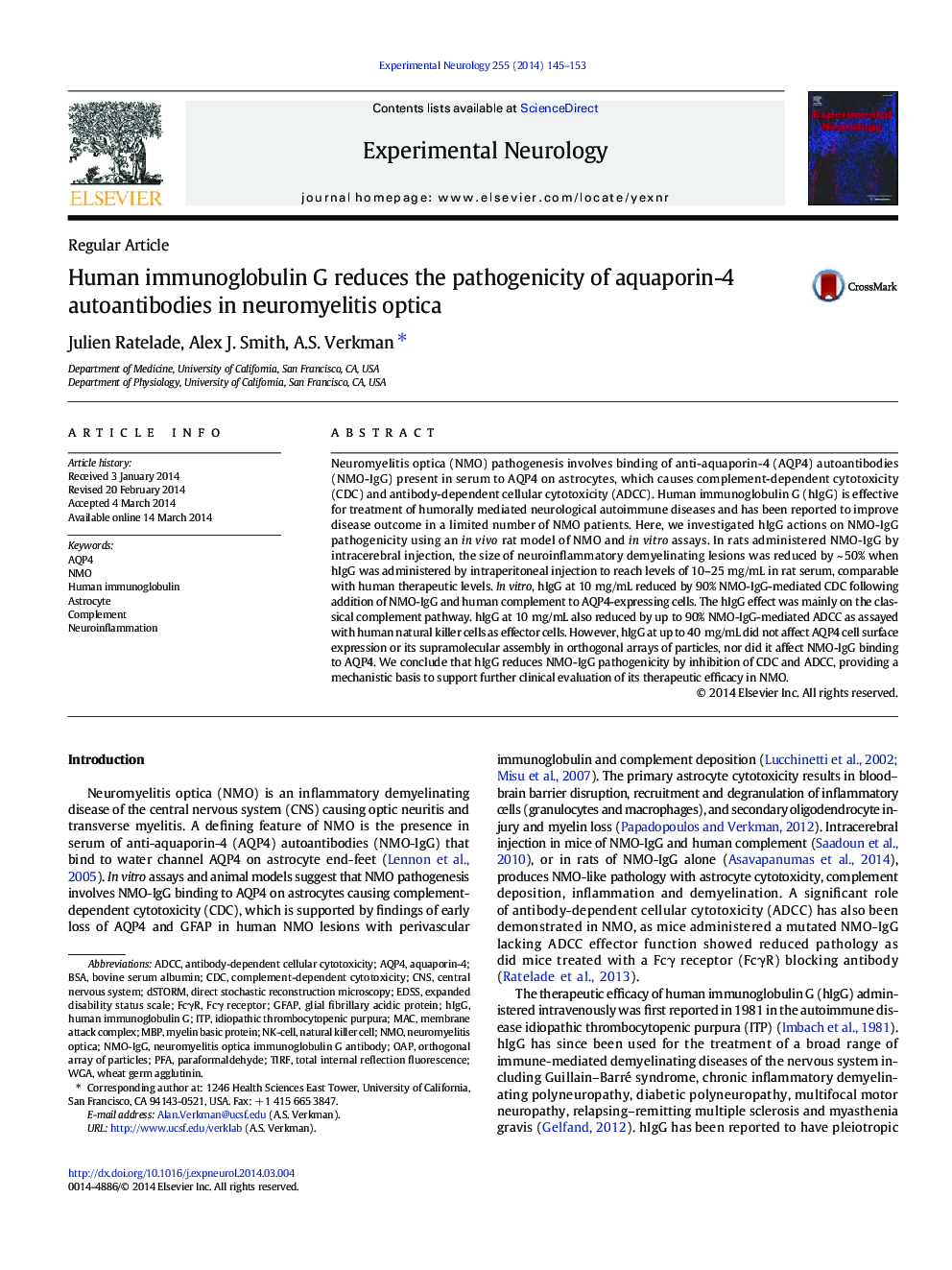| Article ID | Journal | Published Year | Pages | File Type |
|---|---|---|---|---|
| 6017830 | Experimental Neurology | 2014 | 9 Pages |
Abstract
Neuromyelitis optica (NMO) pathogenesis involves binding of anti-aquaporin-4 (AQP4) autoantibodies (NMO-IgG) present in serum to AQP4 on astrocytes, which causes complement-dependent cytotoxicity (CDC) and antibody-dependent cellular cytotoxicity (ADCC). Human immunoglobulin G (hIgG) is effective for treatment of humorally mediated neurological autoimmune diseases and has been reported to improve disease outcome in a limited number of NMO patients. Here, we investigated hIgG actions on NMO-IgG pathogenicity using an in vivo rat model of NMO and in vitro assays. In rats administered NMO-IgG by intracerebral injection, the size of neuroinflammatory demyelinating lesions was reduced by ~Â 50% when hIgG was administered by intraperitoneal injection to reach levels of 10-25Â mg/mL in rat serum, comparable with human therapeutic levels. In vitro, hIgG at 10Â mg/mL reduced by 90% NMO-IgG-mediated CDC following addition of NMO-IgG and human complement to AQP4-expressing cells. The hIgG effect was mainly on the classical complement pathway. hIgG at 10Â mg/mL also reduced by up to 90% NMO-IgG-mediated ADCC as assayed with human natural killer cells as effector cells. However, hIgG at up to 40Â mg/mL did not affect AQP4 cell surface expression or its supramolecular assembly in orthogonal arrays of particles, nor did it affect NMO-IgG binding to AQP4. We conclude that hIgG reduces NMO-IgG pathogenicity by inhibition of CDC and ADCC, providing a mechanistic basis to support further clinical evaluation of its therapeutic efficacy in NMO.
Keywords
OAPHIgGFcγRdSTORMNMOWGATIRFADCCEDSSAquaporin-4AQP4PFAGFAPMBPCDCBSANMO-IgGAstrocytebovine serum albuminantibody-dependent cellular cytotoxicityNeuroinflammationHuman immunoglobulin Ghuman immunoglobulinCNSNK-cellNatural killer cellcomplement-dependent cytotoxicityNeuromyelitis opticacentral nervous systemComplementExpanded Disability Status ScaleMACITPparaformaldehydeidiopathic thrombocytopenic purpuraGlial fibrillary acidic proteinMyelin basic proteinmembrane attack complextotal internal reflection fluorescenceWheat germ agglutininFcγ receptor
Related Topics
Life Sciences
Neuroscience
Neurology
Authors
Julien Ratelade, Alex J. Smith, A.S. Verkman,
